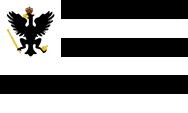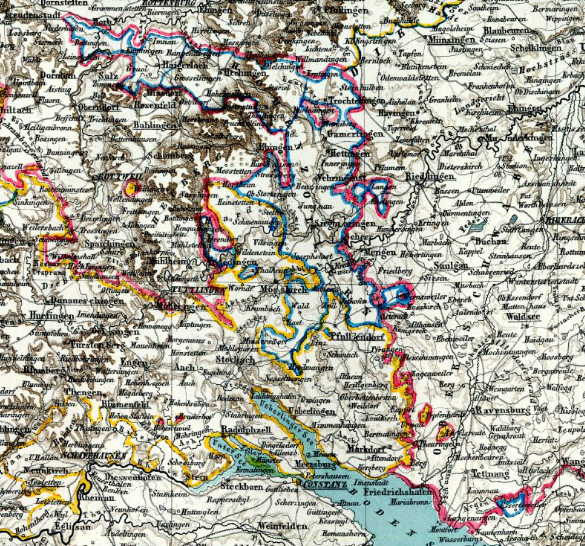mobile View, to the German Version tap the flag
![]()










1061 · first mention of the "Zollern" (later Hohenzollern)
1192 · Count Friedrich III. of Hohenzollern got from Emperor Frederick I. the County of Nuremberg as a fiefdom
ca. 1200 · death of Frederick III.
1218 · the sons of Frederick III. exchange their heritage, Konrad I. gets Nuremberg-Zollern, Frederick IV. receives Hechingen
1411 · the Margraviate of Brandenburg comes to the house of Hohenzollern especially the line of Nuremberg Zollern
1534 · Charles I. of Hohenzollern (Hechingen) receives from Emperor Charles V. the counties of Sigmaringen and Veringen as fiefdom
1576 · inheritance of the Swabian Hohenzollern dynasty, it arised the lines of Hohenzollern-Hechingen (to 1869), Hohenzollern-Haigerloch (to 1634) and Hohenzollern-Sigmaringen
1623 · the Counts of Hohenzollern-Sigmaringen and Hohenzollern-Hechingen become elevatet to Princes
1801 · Peace of Luneville, the Holy Roman Empire of German Nation cedes officially all areas of the left bank of the River Rhine to Napoléon's French Empire, Hohenzollern-Hechingen loses his feudal rights in Liège, compensated by the acquisition of the Dominion of Hirschlatt and the monastery of Maria-Gnadenthal in Stetten
1806 · end of the Holy Roman Empire of German Nation under the pressure of Napoléon, the emperor resigns, the Principality of Hohenzollern-Hechingen joins the Confederation of the Rhine, and can hold its sovereignty
October 1813 · defeat of Napoleon at Leipzig (16th to 18th of October 1813 Battle of Nations)
1814–1815 · Vienna Congress, reorganization of Europe after the Napoleonic era, establishment of the German Confederation
1815 · the Principality of Hohenzollern-Hechingen joines the German Confederation
1828 · founding member of the Bavarian-Wuerttemberg Customs Union
1834 · founding member the German Customs Union
1835 · adoption of a new constitution for Hohenzollern-Hechingen
1848 · Bourgeois Revolution in Germany, riots in Hohenzollern-Hechingen
August 1848 · marching in of Prussian troops
7th of December in 1848 · Prince Frederick William II. Constantine renounces the throne and cedes his country to the Kingdom of Prussia
6th of April in 1850 · the sovereignty of Hohenzollern-Hechingen becomes officially handed over to Prussia, Hohenzollern-Sigmaringen and Hohenzollern-Hechingen become merged to the Prussian governmental district "Sigmaringen" (in practice called "Hohenzollern Countries"), partly administered by the Rhine Province, and partly directly from Berlin
1869 · extinction of the line of Hohenzollern-Hechingen
1946 · establish of the Country of Württemberg-Hohenzollern as a part of the French occupation zone, from the southern parts of the Country of Wuerttemberg and the Hohenzollern Countries
1949 · Wuerttemberg-Hohenzollern is federal country of the FRG
1952 · after a plebiscite gets Wuerttemberg-Hohenzollern fused with Wuerttemberg-Baden and the remaining Baden to the Country of Baden-Wuerttemberg
Source: Wikipedia (D),
RetroBib Retrobibliothek
![]()